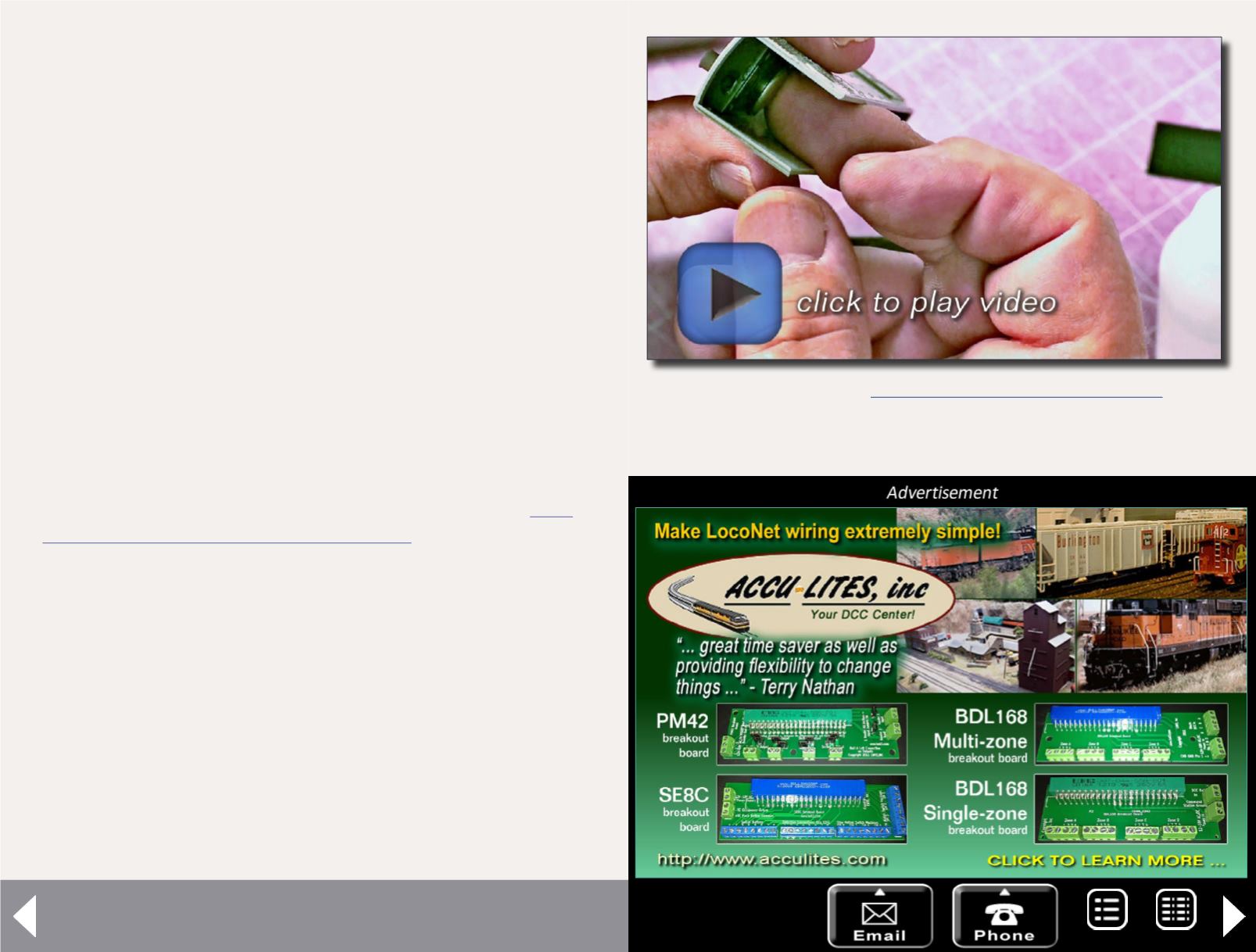
DCC Impulses Column - 6
Figure [4] shows the speaker after some styrene (white) was
added to it. Strips were cut the length of the speaker and glued
to the cone side with MEK. These strips set the height above the
shell sides for the speaker. Since the resulting assembly was .02
inch narrower than the shell, a strip of .02 inch material was cut
to the length of the speaker and attached to one side.
See how it would clear the nubs? If you were building an enclo-
sure against the top of the shell, you could choose a length
of material that moved the speaker away from the top the
desired amount. See the section later in this column, “Do I
have enough room?”
Now that we have the speaker designed to fit where we want
it, let’s go about channeling the sound where it will do the
most good.
Creating a baffle or box against the shell
We always try to design our speaker installations so as to get
the best possible sound out. As I’ve discussed previously
mrh-
ma
, I favor baffling
to derive useful sound from both the front and rear of the
speaker. However, there are times where the only feasible solu-
tion is to put the speaker in a box. Let’s look at both. Starting
with the speaker we’ve set up to go in this gray shell, here’s
how to baffle it or box it.
The difference between boxing this speaker against the shell
and baffling the sound out an opening on the top of the shell
is frequently only the distance between the speaker and the
shell, as well as openings in the shell. The spacing in [4] is
designed for a baffle. I’d want taller spacers below the speaker
MRH-Aug 2014


